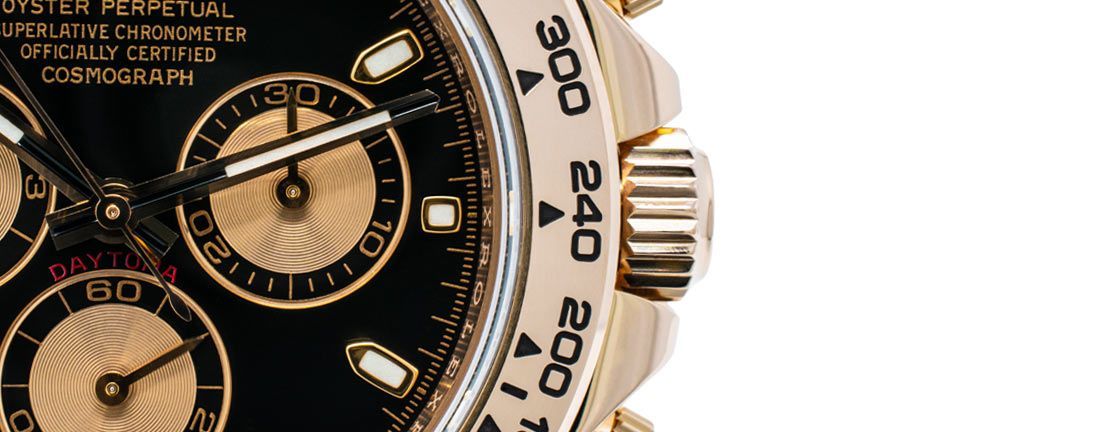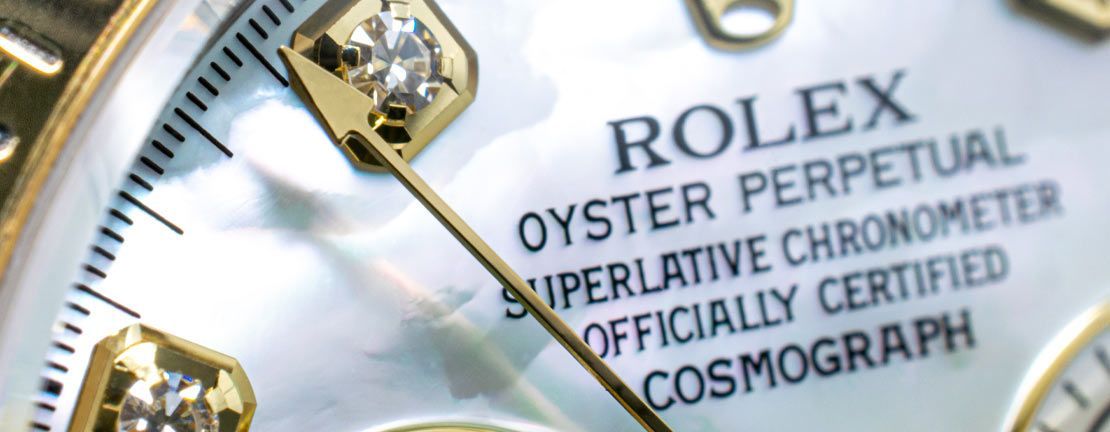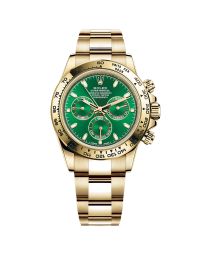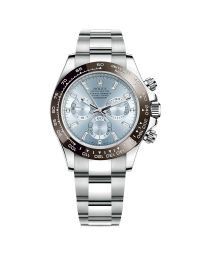Master your Daytona's chronograph function in under 5 minutes with our step-by-step photo gallery
The Rolex Cosmograph Daytona isn't just an icon of motorsport heritage—it's a precision instrument designed to calculate average speeds with mechanical elegance. Whether you're timing lap speeds at the track or calculating travel velocity, understanding your Daytona's tachymeter function transforms this luxury timepiece into a practical tool.
Quick Reference: What You Need to Know
Essential Components:
- Chronograph seconds hand (large center hand)
- Upper screw-down pusher (start/stop timing)
- Lower screw-down pusher (reset function)
- Tachymeter scale bezel (speed calculation)
Key Requirement: You must travel exactly 1 kilometer (or 1 mile) for accurate tachymeter readings.
Video Tutorial: How to Use the Rolex Daytona Bezel
Step-by-Step Visual Guide: Using Your Daytona's Tachymeter
Slide 1: Know Your Controls
Familiarize yourself with the Daytona's chronograph components
Your Daytona features four critical elements for speed calculation: the chronograph seconds hand tracks elapsed time, the upper screw-down pusher controls start/stop functions, the lower screw-down pusher resets all hands to zero, and the tachymeter scale bezel displays your calculated speed per hour.
Slides 2-3: Prepare for Operation
Unscrew both pushers by rotating counterclockwise
Before timing begins, both chronograph pushers must be unscrewed. This step is crucial—the pushers won't function while screwed down, protecting the movement's integrity during daily wear.
Slide 4: Start Your Timing
Press the upper pusher at your starting point
At the exact moment you begin your measured distance (whether 1 kilometer or 1 mile), press the upper pusher. The chronograph seconds hand immediately springs to life, beginning its precise measurement of elapsed time.
Slide 5: Stop at Distance Completion
Press the upper pusher again after traveling your measured distance
Once you've completed exactly 1 kilometer (or 1 mile), press the upper pusher again. The chronograph seconds hand freezes, capturing your precise travel time.
Slide 6: Read Your Speed
The chronograph hand points to your average speed on the tachymeter bezel
Here's where Rolex's engineering brilliance shines. The stopped chronograph seconds hand now points directly to your average speed on the tachymeter scale. In our example, the hand indicates 160 kilometers per hour—your precise average speed over the measured distance.
Slide 7: Reset for Next Use
Press the lower pusher to return all hands to zero
The lower pusher resets both the chronograph seconds hand and any subsidiary dials, returning your Daytona to its starting position for the next timing session.
Slides 8-9: Secure Your Watch
Screw both pushers clockwise to ensure water resistance
Never forget this critical step. Screw both pushers down clockwise until secure. Leaving pushers unscrewed compromises your Daytona's water resistance—a costly mistake that could damage this precision instrument.
Understanding Tachymeter Science
The tachymeter's mathematical principle is elegantly simple: it calculates speed using the formula Speed = Distance ÷ Time. Since the scale assumes a fixed distance of 1 unit (kilometer or mile), it displays the mathematical result of 3600 (seconds in an hour) divided by your elapsed time in seconds.
Professional Tip: For distances other than 1 kilometer/mile, multiply or divide your tachymeter reading accordingly. Traveled 2 kilometers? Divide the reading by 2 for accurate speed.
Why the Daytona's Tachymeter Matters
Beyond pure functionality, the Daytona's tachymeter represents Rolex's deep connection to motorsport heritage. From Paul Newman's legendary racing exploits to modern Formula 1 partnerships, this feature embodies the precision timing that separates champions from competitors.
Real-World Applications:
- Track day lap timing
- Highway travel speed verification
- Athletic performance measurement
- Professional racing applications
Essential Reminders
Water Resistance Warning: Never operate chronograph pushers underwater or with wet hands. Always ensure pushers are fully screwed down before water exposure.
Accuracy Note: Tachymeter readings are most accurate over exactly 1 kilometer or 1 mile. Shorter distances reduce precision significantly.
Ready to explore Rolex Daytonas? Browse our hand-selected collection of authenticated Cosmograph Daytonas here, each representing the pinnacle of Swiss chronograph engineering.









